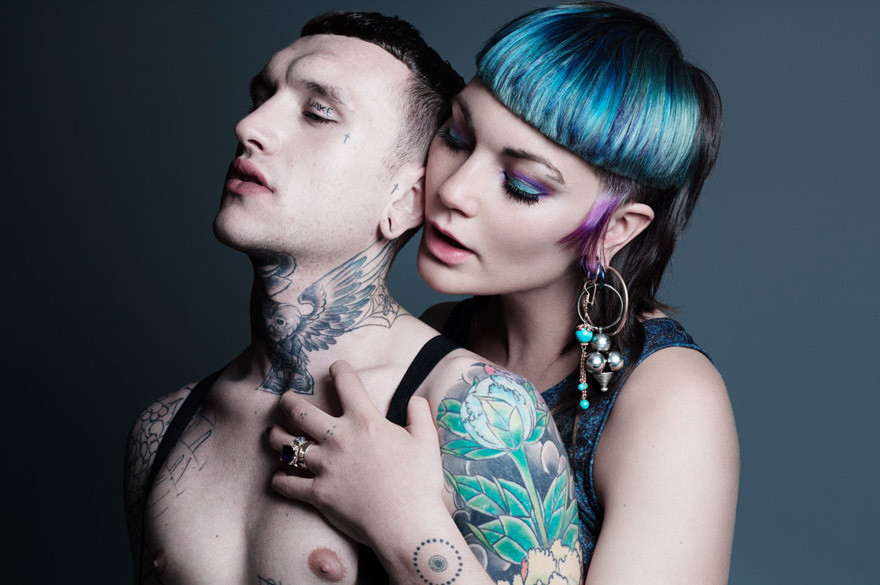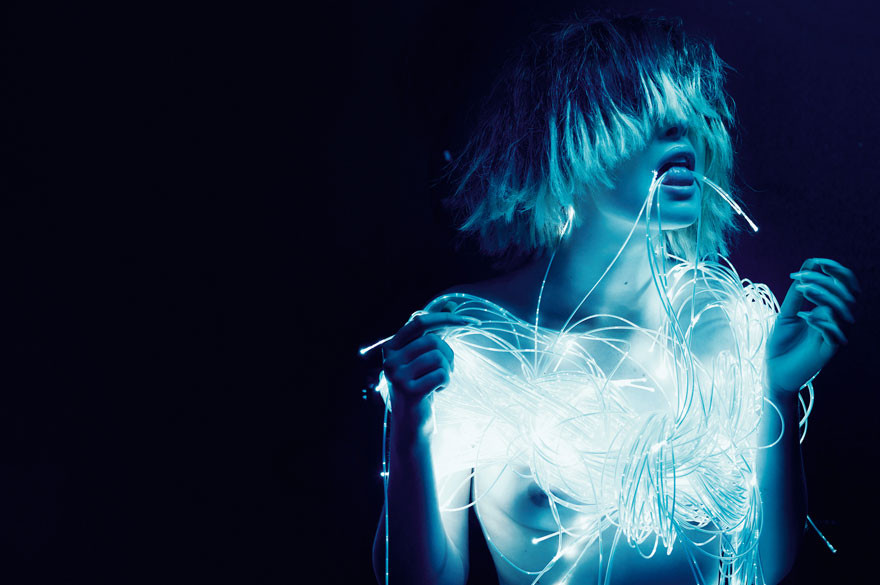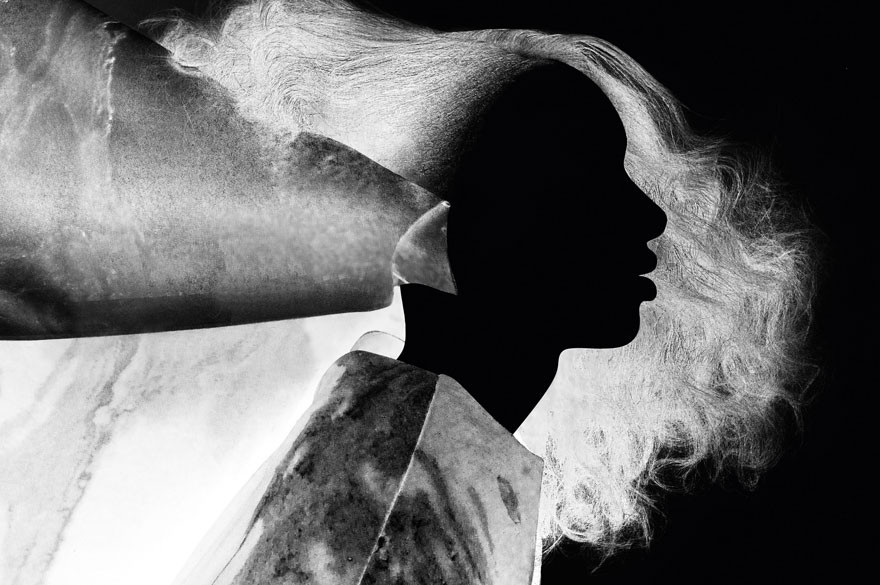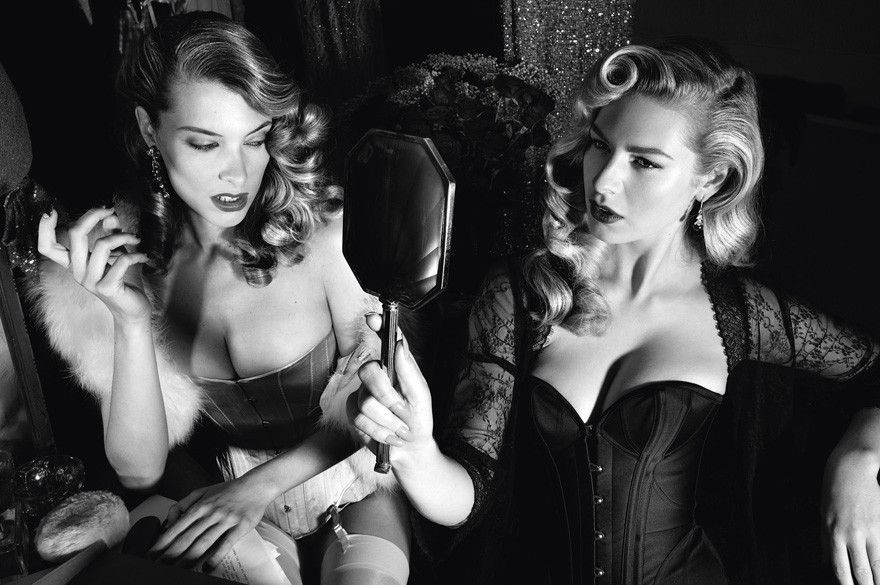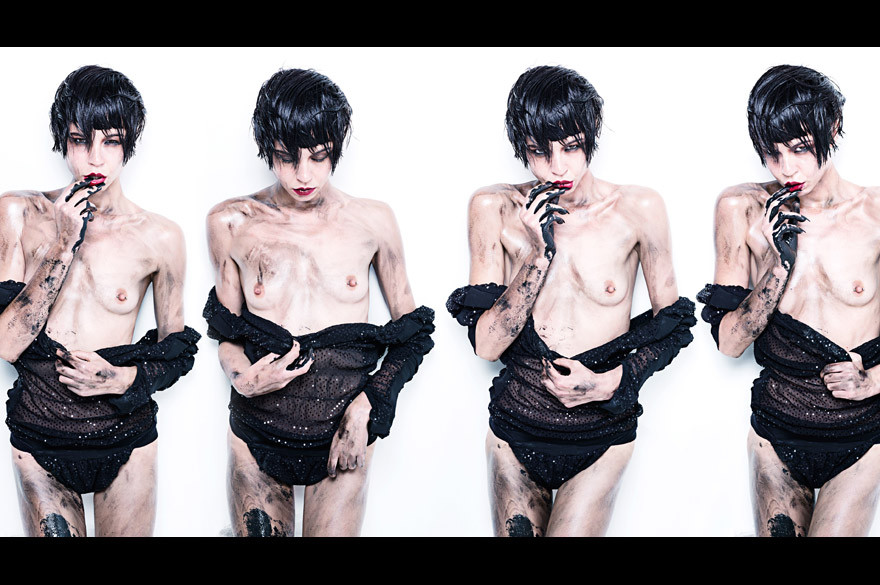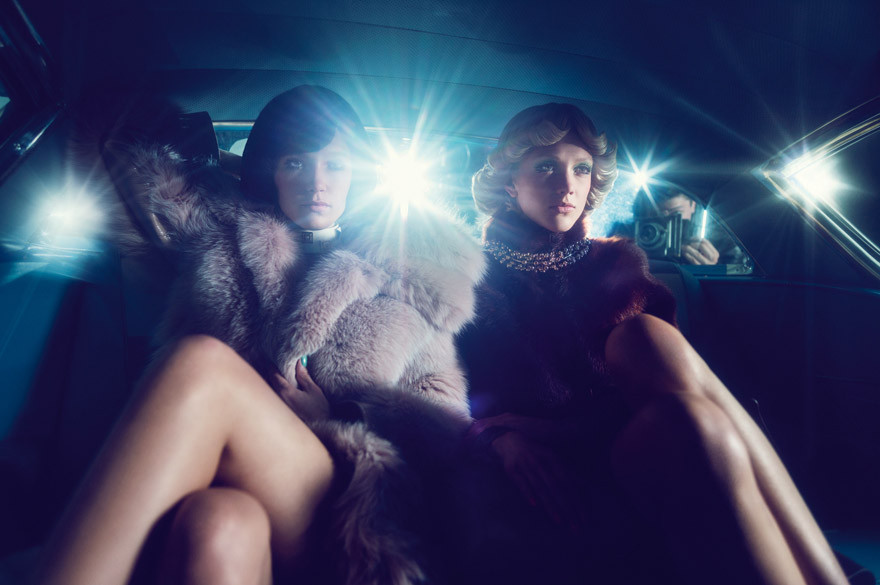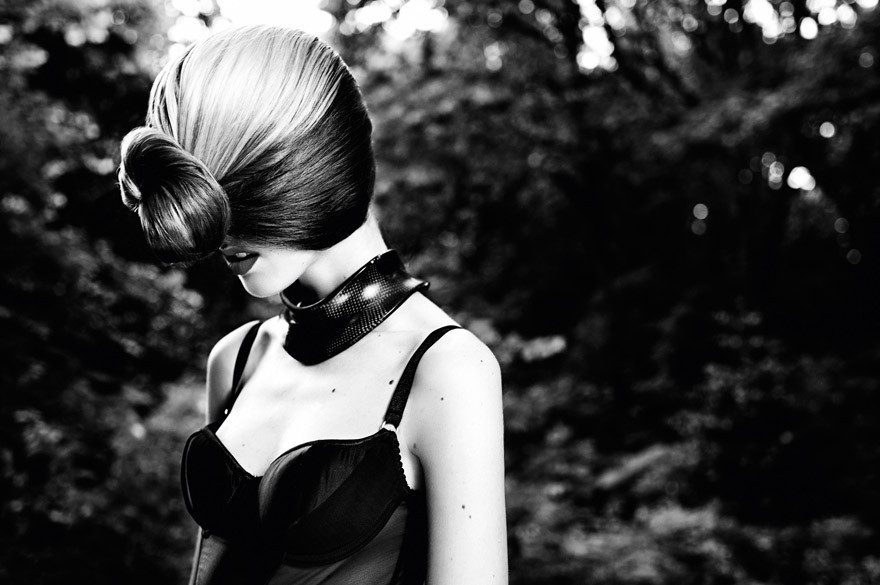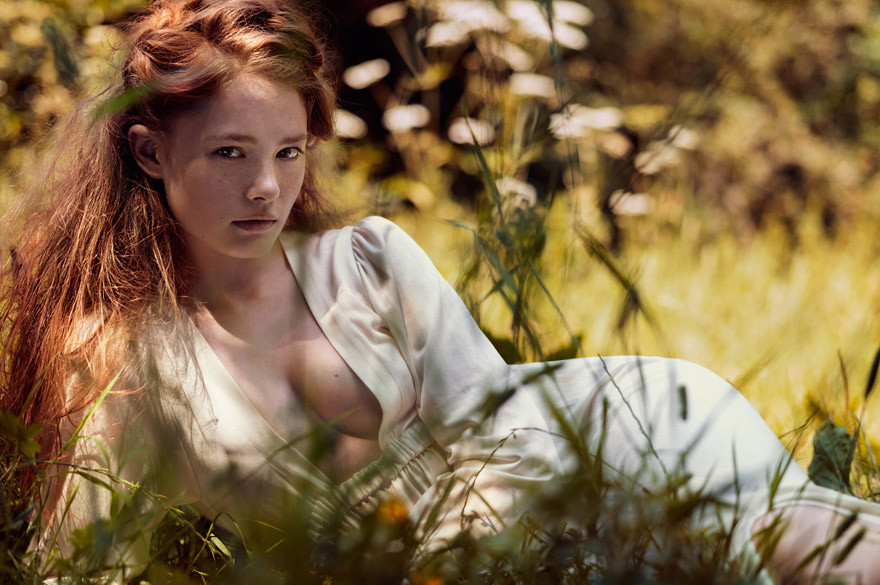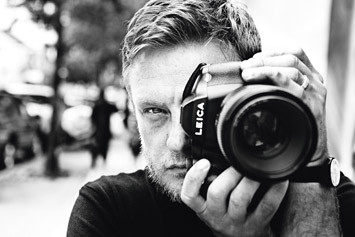
The third issue of the S-Magazine features, for the first time, pictures taken by just one photographer – Rankin. In these nine series of photos everything revolves around the theme of hair. The London photographer worked with renowned stylists and even let them take on the staging of the respective series.
How did the S-Magazine project come about?
I was using and loved the S-System camera. It’s a brilliant example of a high-res camera – in a medium format resolution file and with the 35mm experience of the body. It reminded me a little bit of the old Pentax 67 camera. I love the autofocus on it, the lenses are out of this world and I love the weight of it. It gives a great image quality. After I’d used it for a while I was sent an S-Magazine and asked if I’d be interested in contributing – then they suggested the possibility of me doing the whole issue. I wanted it to have a theme. I’d always thought it would be interesting to do a hair book – where you take hairdressers and you give them the opportunity to do anything they want. I just said to them why don’t we do something that’s based on hair? And they went for it.
You’ve collaborated with hair stylists for this issue – letting them lead the art direction. That’s unusual.
These guys are at the top of their game – really talented. What they’re asked to do most of the time is fairly basic so they don’t have that chance to perform. It’s very unusual for a hair stylist to get the opportunity to express themselves that directly, with that much freedom.
They really are artists. I’ve got relationships with each one of them on a different level. Some of them I work with as much as I can – they’re my go-to hairdressers. And some of them I’ve worked with and I’ve been really admiring of what they do, but I haven’t always been able to book them for the work I’ve wanted. So it was a chance to collaborate with the people I really admire, but also people I knew had hidden talents that maybe hadn’t come out yet.
You work very collaboratively now – particularly the way you’ve set up your studio. Why is that important?
I really appreciate people’s talents in a more accepting, encouraging way, I suppose. I listen to people more. My team is very strong – very much a part of making decisions. You have to have an ego on set but it’s also OK to listen to other people’s opinions and take risks. That’s one of the brilliant things about working with this camera. You can take risks with it.
Mistakes happen and they work, and you can embrace that. If you go into it without that it defeats the object of what digital is and what this kind of camera allows you to do. It’s not just about getting it right, or doing it by the book.
»If you get a shit hairdresser on a shoot, you’re fucked.«
Rankin
You’ve produced a lot of books, but you’re passionate about magazines too. Why is that?
When I come across a creative idea I process it very quickly and I have a team of people who also process things very quickly. We’ll take an idea from anywhere. One of my producers came up with an idea for a shoot. We processed it and shot it, super-quick. Which is why I like magazines. I can come up with something on a Monday and shoot it by Tuesday evening. You can do an 8-page story and it’s done. You get through more. I love the fact that S-Magazine is a magazine – it means more people can afford it. And the more people who see it, the better. Because that’s what you’re always trying to do – communicate with as many people as you can.
You work a lot.
I shoot nearly every day. Everyone says I’m a workaholic but actually, I just love that process of coming up with an idea – wherever it comes from – and getting to the final image. That’s an amazing feeling for me. Creating imagery that yougetturnedonbyisadrug. 98% of what I do is my own desire and hunger to create, create, create. I love it when this place [Rankin’s studio] becomes like a factory and I can see my assistants shooting, or people making films. I love being around that, and around these people expressing themselves. I never forget what a real privilege that is.
Can you talk us through the stylists you collaborated with on the issue? Start with Wendy Iles.
Wendy is the best hairdresser I’ve ever worked with in terms of slick and perfect imagery. If you see ad campaigns for big beauty brands – nine times out of ten Wendy’s done one of them. She can make hair do anything she wants. Here she wanted to do images where she wasn’t doing the ‘perfect’ hairstyle. She was doing characters. She was very inspired by [her] trip to LA where she saw these kids Downtown. She wanted to embrace what happens on the street in the UK and all major cities. Her shoot is the opposite of what she would normally do.
Tell us about Kenna’s shoot.
He’s definitely the most out-there of the hairdressers in terms of what he’s done. He took the brief of ‘do whatever you want’ to heart and really went as far as you can. They’re kind of a combination of hair technique and hair concept. But he’s taken retouching, and digital imaging and pushed it as far as he can take that as well. This is the shoot I felt most like a technician on. I didn’t have to do much apart from press the button and light it.
What about Raphaël Salley?
Raph’s one of those stylists who’s great at really big hair so again, he played against what he’s known for.
You’ve got this shot where you’ve have two girls with hair all over their faces, and the shot with the tongue.
Very rarely do we do that. He took the hair and made it a character in itself. I think because of that it’s really successful. He showed he has a fun side to his love affair with hair and that’s what I like about it.
And Tina Outen?
Tina’s was one of the later shoots. We kind of backed her into a corner. We said she had to shoot on location – we have to do this and we have to do that. She took that and made it very conceptual. She set the tone for the whole thing. It’s 40s-inspired glamour but with a twist with the modern fashion styling. We made it more Hitchcock – more Orson Welles’ A Touch of Evil. It’s one of my favourite narrative stories. I don’t do a lot of narrative fashion stories, it’s not something I’m naturally drawn to as a photographer – I’d rather make films. But I think it was successful because of her preparation and vision.
»It’s 40s-inspired glamour but with a twist with the modern fashion styling.«
Rankin
What about Nick Irwin?
Nick played to my strengths. He knows that I love to shoot very sexy, strong women: confident and empowered women. So there’s a lot of hair across the face, sexy wet hair. Wet hair is very hard to do for a hairdresser. You don’t just spray it and make it wet – you’ve got to get it right, get the texture perfect or it can just look like a mess. He did a fantastic job on the hair but more than anything the theme of his shoot really inspired me personally.
Tell us about Alain Pichon’s shoot.
Alain and I had been talking for a long time about a project we could do together. On set he’s very much a creative director – he likes to be involved. I think if he could, he’d pick up the camera and do it himself.
And Kevin Ford’s?
Kevin’s story came from a test shoot that I’d done. I knew that we needed another idea in the magazine so I went to Kevin because I enjoy working with him, and he really listens. He said ‘I like it – but I’m going to do something different.’ He took it so far in his own direction that I couldn’t really call it anything to do with me. He made it his own. What I like about it is he’s created new characters with the hair, so the models become animals. They’re quite feral, unusual, sort of faerie-style characters in the story. I’ve never seen anything quite like it.
Tell us about Charlie Le Mindu’s shoot.
I’d never worked with Charlie but I really admired what he was doing. In a sense his are the most polished of the shoots. You look at that story and every bit pieces together perfectly. It was interesting to work with him for the first time and he was brilliant. But it was very much his vision. To me it feels more like a fashion than a hair story, which has a lot do with how Charlie approaches the business and because of that I think it stands out positively.
And Johnnie Sapong’s?
Johnnie got what we call the shit-end of the stick. He was last to shoot and, as last to shoot, you’re filling the gaps of what has worked and what hasn’t worked. But God bless Johnnie because he came up with something I would never usually do as a photographer. Something very soft, very beautiful, very much about the girls, about making them look beautiful. And it was exceptional. I rarely shoot in that style – with that lighting and with that kind of approach where I’m working against light or working with light to place people. With this we were looking for a mood- and that’s very unlike me. It’s one of my favourite shoots for a long time, because he took me out of my comfort zone. I also think it really suited the potential of the camera. Low light and wide open on the f-stop.
You’ve included some of your past and present assistants in the S-League section of the magazine. Tell us about that.
I’ve never really been one of those people who want it to all be about me. I love the idea that we’re creating a platform. We’re creating a factory of other people’s ideas and talent. I think that feeds back to my creativity. If you’ve got a lot of creative people around you, you’re always pushing each other. They’re all very varied and interesting shoots and I’m proud of them.
You shot portraits of the stylists – and interviewed them. Why was that?
I wanted to show the faces behind the great work that these guys do. They’ve got strong opinions and they input so much into this world of fashion and beauty. They’re the best at what they do. There are probably a hundred great hairdressers in the world – and I mean really great hairdressers. That might seem cheesy to people who aren’t in this world, but I am. It’s my livelihood and when it’s creative, it’s really creative. It’s not about selling products. Or having a good haircut. It’s about experimenting. I don’t know any of these guys that do this job to make money. They do it because they have a love of it – a desire to create this image that you see in a magazine, or a gallery wall. And I wanted to put faces to the names. They’re as important to a shoot as I am. If you get a shit hairdresser on a shoot, you’re fucked.
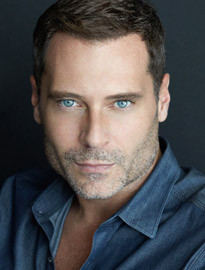
Interview
GREG LOTUS
Greg Lotus the famous US fashion photographer is a busy man working for glossies such as Vogue Italia, Vanity Fair and W Magazine, so we are more than happy that he found time to chat with us about his upcoming career in fine arts.
READ MORE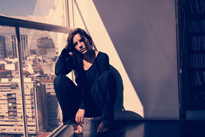
Interview
AUTUMN SONNICHSEN
Cosmopolitan and photographer: Autumn Sonnichsen was interviewed about women, intimacy and erotic photography in Brazil.
READ MORE

